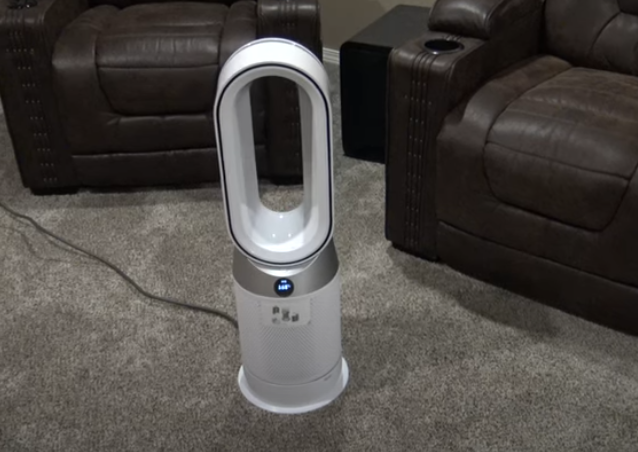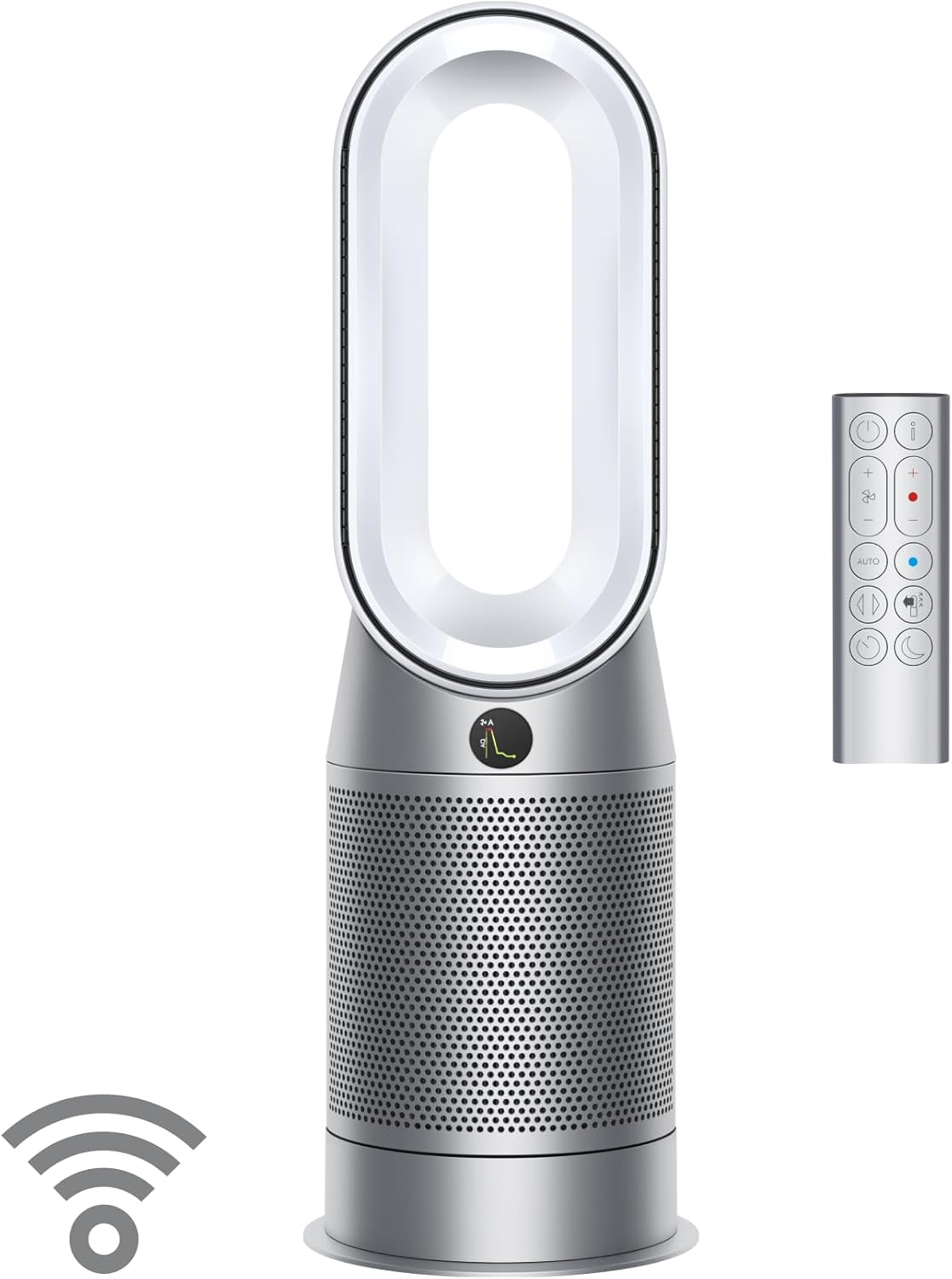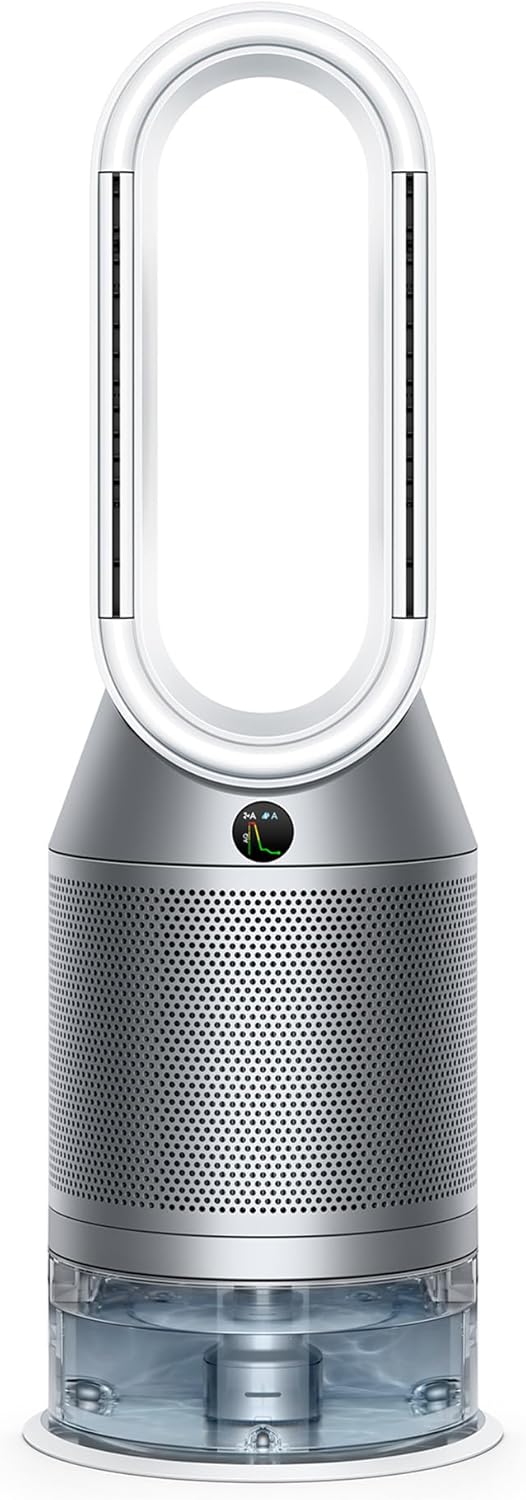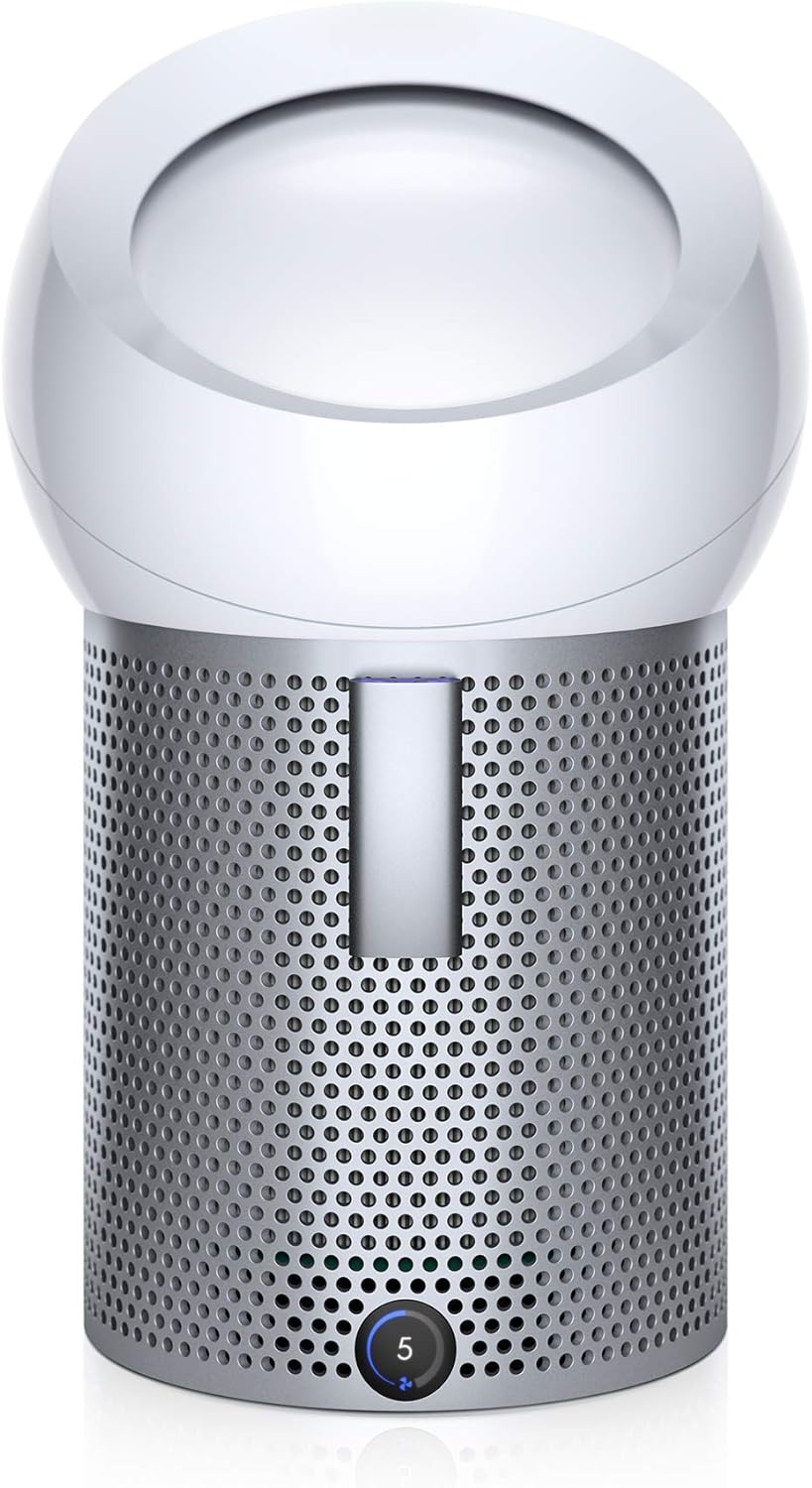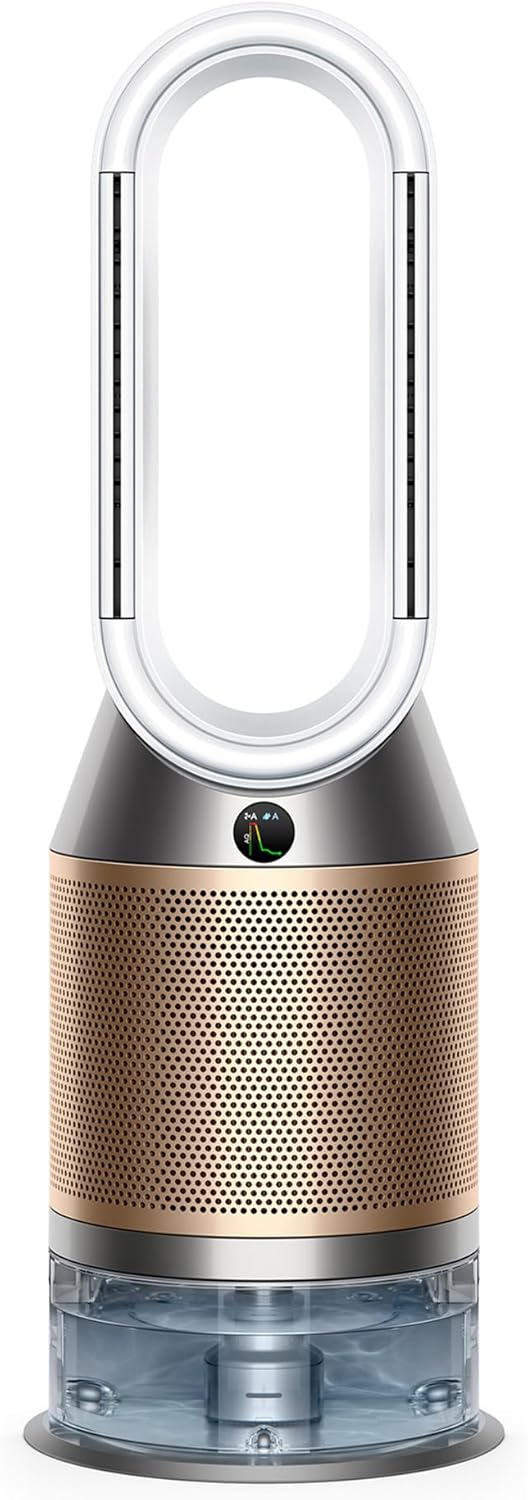When you purchase through links on our site, we may earn an affiliate commission.
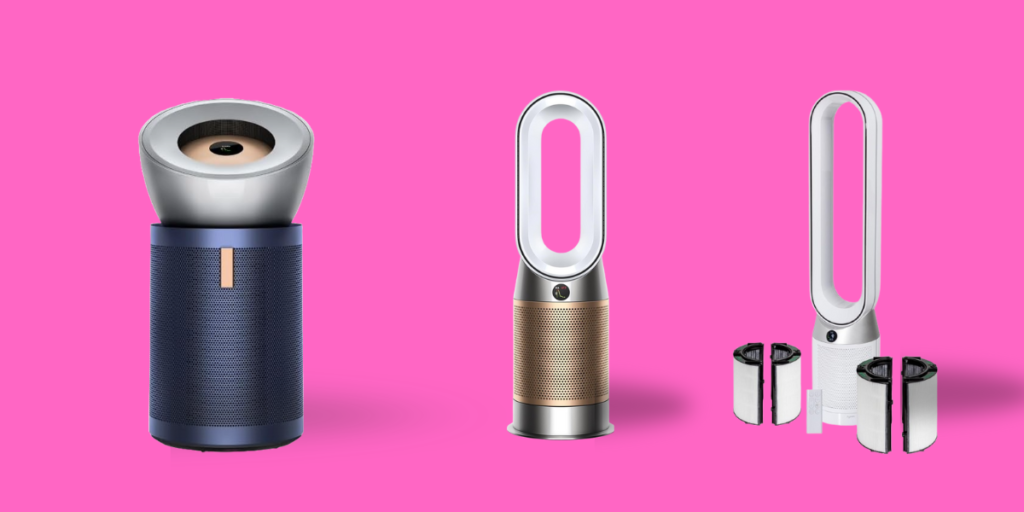
Clean indoor air is more crucial than ever in modern society. Purchasing a high-quality air purifier is crucial, regardless of your goals—whether they are to lower allergies and pollutants or just make your home healthier for you and your family. Some of the greatest air purifiers available are from Dyson, renowned for its cutting-edge technology and stylish designs.
Dyson is still at the forefront in 2025 thanks to its cutting-edge filtration methods, strong performance, and easy-to-use features, which make their air purifiers a great option for any home. To assist you in selecting the ideal Dyson air purifier model for cleaner air in your house, this article will highlight the greatest models available.
I got an opportunity to try the latest Dyson air purifier, that Air Purifier Cool TP07, and it could not have come at a better
time when air pollution levels are at an all-time high just for the record, I have been using an earlier version of the Dyson air
purifier for a few months now, and I love it.
I will talk about both the pros as well as the potential improvements in a product so that you can make an informed choice by yourself.
The first key reason is that the Dyson air purifier is always sensing. yes, it is recommended
that you keep your air purifier on most of the time especially if you live in an area where the air quality is not great but we always try to optimize as much as we can so that we can extend the life of the appliance and the filters within the air purifier.
the second key reason is that it is suitable for rooms of all sizes small medium and large so if you are using an air purifier
for a larger room or for your living and dining combined then a Dyson air purifier would be ideal as other air purifiers
may not do justice to the same size room.
Air purification, heating, and cooling are all combined into one stylish, contemporary machine with the Dyson Purifier Hot+Cool HP07, a three-in-one appliance. Dyson’s HEPA H13 filtration, Air Multiplier technology, and intelligent air quality monitoring make this air purifier unique. The HP07 is made to effectively handle all of your needs, whether you’re trying to get rid of allergies, and pollutants, or just keep your home at a suitable temperature.
One of the best options for people looking for excellent indoor air quality is the Dyson Air Purifier PH03, a high-end 3-in-1 appliance that combines cooling, humidification, and air filtration. An activated carbon filter efficiently eliminates odors, volatile organic compounds, and hazardous gases like formaldehyde, while a HEPA H13 filter effectively collects 99.97% of airborne pollutants as small as 0.3 microns, such as dust, allergens, mold spores, and germs. By maintaining ideal moisture levels, its integrated humidifier helps to avoid dry air-related problems like skin irritation and respiratory discomfort. It ensures steady circulation without the need for revolving blades by dispersing the cleansed, humidified air across the space using Dyson’s Air Multiplier™ technology.
The BP01 is easy to transport from one room to another because it is small and light. Its sleek style fits in well with contemporary decor, and its compact size makes it suitable for offices, bedrooms, and tiny living areas.By utilizing Dyson’s cutting-edge technology, this purifier ensures a healthier living environment by capturing airborne pollutants, allergies, and hazardous gases. The BP01 is a prominent competitor in the air purification market thanks to its elegant appearance and easy-to-use features. Its characteristics, advantages, performance, and if it is a good investment for your house are all examined in this article.
I can state with confidence that the Dyson BP01 Pure Cool Me has earned a place in my daily routine after using it for several months. It’s similar to having a private bubble of pure air wherever you need it most. Although it requires money, is it really possible to place a value on inhaling cleaner air?
Keep in mind that air quality affects health as much as comfort. And the BP01, in my opinion, succeeds in both areas. Having your own purified air stream is something you didn’t realize you needed until you have it, whether you’re working, sleeping, or just lounging.
The Dyson Air Purifier PH04 is a high-end humidification and air purification appliance made to make interior spaces cleaner and cozier. It ensures fresh and healthy air by capturing 99.97% of small particles, such as dust, pollen, and allergens, with its HEPA H13 filtration technology. It is perfect for homes with dogs, smokers, or high pollution levels since it has an activated carbon filter that efficiently eliminates odors, smoke, and dangerous gases like VOCs. The PH04’s sophisticated humidification mechanism is one of its best features; it automatically maintains ideal moisture levels, avoiding dry air that can lead to skin irritation, respiratory discomfort, and static accumulation.
In addition to improving safety, particularly in households with kids or pets, its bladeless design adds to its sleek, contemporary look that goes well with any type of interior decor. While the inbuilt LCD display offers clear insights into pollutant levels and filter status, the BP03‘s sophisticated sensors continuously monitor air quality in real time, automatically altering its purification settings to maximize performance. It is a smart addition to any house because users can easily control the gadget with the Dyson Link App, which enables remote monitoring, scheduling, and customization.
The BP03‘s oscillation capability ensures widespread air circulation, unlike static purifiers that only affect limited areas; its auto mode allows for hands-free operation, intelligently adjusting speed and performance based on current air quality, so you don’t have to worry about manual settings; and its True HEPA filtration technology makes it highly effective in reducing indoor air pollution, a growing concern for urban households exposed to smog, dust, and allergens. Whether you live in a city apartment, suburban home, or work in an office setting, this air purifier helps improve indoor air quality significantly, benefiting respiratory health, reducing allergic reactions, and improving overall well-being.
Dyson is a long-term investment for improved air quality because of its high-end construction, which guarantees dependability and longevity. Additionally, top international organizations have recognized the purifier as allergy and asthma-friendly, demonstrating its efficacy in eliminating airborne irritants. For people who want to breathe cleaner, healthier air while savoring Dyson’s distinctive fusion of state-of-the-art technology, practicality, and aesthetics, the BP03 Air Purifier is a great option.
Need Help? Find Your Answers Here
Can I Control My Dyson Air Purifier with an App?
What types of pollutants can Dyson air purifiers remove?
Which Dyson air purifier is best for asthma and allergies?
Can Dyson air purifiers remove smoke and cooking odors effectively?
Can Dyson air purifiers remove viruses and bacteria from indoor air?
How to replace Dyson air purifier filters step by step?
Which Dyson air purifier is the best for home use in 2025?
Do Dyson air purifiers kill bacteria and viruses?
What is Dyson’s Air Multiplier™ technology, and how does it work?
Can a Dyson air purifier run 24/7, and does it use a lot of electricity?
Can I Control My Dyson Air Purifier with an App?
Yes, you can use the Dyson Link App, which is compatible with iOS and Android smartphones, to remotely control your Dyson air purifier. You can set timers, activate auto mode, change fan speed, check filter life, and monitor indoor air quality in real time with this clever software from anywhere. Hands-free voice control is made possible by the seamless integration of your Dyson air purifier with Google Assistant, Amazon Alexa, and Apple Siri Shortcuts over Wi-Fi networking.
Additionally, the Dyson Link App offers comprehensive air quality data that display the amounts of NO2, VOCs, PM2.5, and PM10 in your house. To guarantee peak performance, it even enables you to plan purification sessions and get notifications when your filters need to be changed. With a few taps on your smartphone, the app makes it simple to maintain clean and healthy indoor air whether you’re at home or away.
What types of pollutants can Dyson air purifiers remove?
Dyson air purifiers utilize advanced filtration technology to effectively remove multiple types of indoor air pollutants through their multi-stage purification system. The HEPA H13 filter captures 99.97% of particles as small as 0.3 microns, including common allergens like pollen, pet dander, dust mites, and mold spores. The advanced activated carbon layer specifically targets gases, volatile organic compounds (VOCs), and household odors from cooking, pets, and cleaning products. For enhanced protection, select models feature Cryptomic™ technology that continuously destroys formaldehyde, a common indoor pollutant emitted from furniture and building materials.
The purifiers also excel at removing ultrafine particles like PM2.5 and PM10, which include smoke particles, bacteria, vehicle emissions, and industrial pollutants that can enter homes through windows and ventilation systems. Real-time sensors continuously monitor air quality, detecting microscopic pollutants and adjusting filtration levels accordingly.
The Air Multiplier™ technology ensures comprehensive room coverage, creating powerful airflow that draws in contaminated air from all directions while projecting clean air throughout the space. This combination of advanced filtration, smart sensing, and efficient air distribution makes Dyson air purifiers particularly effective at maintaining healthy indoor air quality by removing both visible and invisible pollutants that can impact respiratory health and overall well-being.
Which Dyson air purifier is best for asthma and allergies?
The Dyson Purifier Hot+Cool HP07 and Dyson Purifier Cool TP07 are two of the best Dyson air purifiers for people with asthma or allergies since they are made to provide cleaner, allergen-free air. These models have a completely sealed HEPA H13 filtering system that keeps 99.97% of minute allergens out of your house, such as dust mites, mold spores, pollen, and pet dander. The activated carbon filter is perfect for those with respiratory sensitivities because it also helps eliminate smoke, household odors, and volatile organic compounds.
While real-time air quality monitoring allows you to track allergy levels using the Dyson Link App, Dyson’s Air Multiplier™ technology guarantees that purified air is spread evenly. Asthma and allergy patients can enjoy a healthier home environment thanks to the auto mode, which modifies purifying settings based on contaminants identified. The Dyson Purifier Hot+Cool HP07 is an excellent all-season option if you require both heating and cooling capabilities, while the TP07 model is ideal for people who require strong air purification with a cooling fan.
Can Dyson air purifiers remove smoke and cooking odors effectively?
Dyson air purifiers are highly effective at removing smoke and cooking odors through their comprehensive three-stage filtration system. The activated carbon filter, containing thousands of carbon granules with increased surface area, specifically targets and traps gas molecules, volatile organic compounds (VOCs), and odorous particles from cooking, smoking, and other household activities. The HEPA H13 filter works in conjunction with the carbon layer to capture smoke particles as small as 0.3 microns, ensuring both the visible smoke and invisible harmful compounds are removed from your indoor air. The Air Multiplier™ technology amplifies this purification process by creating powerful airflow that quickly circulates clean air throughout the room, processing large volumes of contaminated air efficiently.
For optimal performance in tackling smoke and cooking odors, Dyson recommends strategic placement of the purifier near but not directly adjacent to the source of odors (like kitchens or areas where smoking occurs). The unit’s automatic mode continuously monitors air quality through advanced sensors, automatically adjusting fan speed based on detected pollutant levels.
This smart functionality ensures rapid response to sudden increases in smoke or cooking emissions. The activated carbon filter typically maintains its odor-trapping effectiveness for 12-18 months under normal usage, though homes with frequent cooking or smoking may require more frequent filter replacements.
Real-time air quality monitoring through the LCD display and Dyson Link app allows users to track the purifier’s performance, showing immediate improvements in air quality as smoke and odors are filtered out. Independent laboratory tests have demonstrated that Dyson purifiers can remove up to 99% of smoke particles and significantly reduce cooking odors within 30-60 minutes of operation at maximum settings.
Can Dyson air purifiers remove viruses and bacteria from indoor air?
Yes, Dyson air purifiers are designed to capture and reduce airborne viruses and bacteria, helping to improve indoor air quality. They use advanced HEPA H13 filtration, which can trap 99.97% of microscopic particles as small as 0.3 microns, including bacteria, dust, mold spores, and some viruses. Additionally, Dyson’s activated carbon filters help neutralize harmful airborne gases and volatile organic compounds (VOCs), making the air cleaner and safer to breathe.
Certain Dyson products, such as the Dyson Purifier Big+Quiet Formaldehyde and the Dyson Purifier Hot+Cool HP09, include sealed HEPA filtering systems that stop contaminants from returning to the atmosphere. Dyson purifiers help eliminate airborne particles that contain viruses, lowering the danger of airborne transmission, even though they do not directly kill viruses. A healthier interior environment can be produced by combining a Dyson air purifier with appropriate ventilation, humidity control, and routine surface cleaning for further protection.
How to replace Dyson air purifier filters step by step?
Replacing your Dyson air purifier filter is essential for maintaining optimal performance and indoor air quality. The process begins with checking your filter status through either the LCD display or the Dyson Link app, which monitors filter life and sends notifications when replacement is needed. Before starting the replacement process, ensure you have genuine Dyson replacement filters compatible with your specific model, as using non-genuine filters can compromise purification effectiveness and potentially void your warranty. The recommended replacement interval is typically 12 months based on 12 hours of daily usage, though this may vary depending on indoor air quality conditions.
The step-by-step replacement process starts with powering off and unplugging your Dyson air purifier for safety. Locate the filter compartment, usually at the base of the unit (for tower models) or behind the outer shell (for desk models). Press the release buttons on both sides of the unit to remove the outer cover or filter housing. Some models may require gentle pressure on specific points marked with arrows. Take note of how the old filter is positioned before removal, as this will help with the correct installation of the new filter. Carefully remove the old filter by gently pulling it away from the unit, being cautious not to disturb any dust or debris that may have accumulated.

Before installing the new filter, inspect the air purifier’s internal compartment and clean any visible dust with a soft, dry cloth. Remove the new filter from its packaging and examine it for any damage. The new filter should have clear markings indicating the correct orientation for installation. Most Dyson filters are designed with a specific alignment that ensures proper fit and function. Insert the new filter into the unit, making sure it clicks firmly into place. The filter should sit flush within its housing with no gaps around the edges. Some models feature multiple filter layers that need to be installed in a specific order – typically, the HEPA filter followed by the activated carbon layer.
After installing the new filter, replace the outer cover or filter housing, ensuring all securing mechanisms click into place. Reconnect the power and turn on your purifier. For models with LCD displays or app connectivity, you’ll need to reset the filter life indicator. This usually involves pressing and holding specific buttons (detailed in your user manual) or using the app’s filter reset function. The display should now show a full filter life reading, confirming successful replacement. Run the purifier on maximum speed for 10-15 minutes to ensure proper operation and to help settle the new filter.
To maintain optimal performance after filter replacement, it’s important to follow proper disposal and maintenance practices. Place the old filter in a sealed bag before disposing to prevent trapped particles from releasing back into the air. Document the replacement date and set a reminder for the next change. Regular maintenance between filter changes includes vacuuming the pre-filter mesh (if your model has one) every 3-4 weeks and keeping the air intake vents clear of obstruction. Monitor your purifier’s performance through the app or display readings to ensure the new filter is functioning correctly. For homes with high pollution levels, pets, or frequent cooking, consider checking filter status monthly and potentially replacing filters more frequently than the standard 12-month recommendation.
Which Dyson air purifier is the best for home use in 2025?
When choosing the best Dyson air purifier for home use in 2025, the Dyson Purifier Cool™ Autoreact (TP7A) and Dyson Purifier Hot+Cool™ Formaldehyde (HP09) stand out as top options. The TP7A is an excellent choice for all-season air purification, efficiently capturing dust, allergens, and even microscopic pollutants with its advanced HEPA and activated carbon filters. It also features an intelligent air quality sensor that automatically adjusts settings for optimal purification. Its bladeless fan design not only purifies but also provides a cooling effect, making it ideal for bedrooms and living spaces.
For those who need both heating and cooling functions along with superior air purification, the HP09 is a premium pick.This model is ideal for houses with new furniture, paint, or carpets that may release volatile organic compounds (VOCs) because it comes with Dyson’s formaldehyde-destroying filter. Additionally, it features a completely sealed HEPA H13 filtration system that collects 99.97% of allergens and microorganisms as small as 0.3 microns. The HP09 ensures cleaner air while maintaining a comfortable home atmosphere regardless of the temperature outside. Both of these Dyson purifiers offer strong purification with intelligent features that improve the air quality in your house, depending on your demands.
Do Dyson air purifiers kill bacteria and viruses?
Dyson air purifiers are designed to capture bacteria and viruses rather than kill them.They employ cutting-edge HEPA H13 filtration, which captures 99.97% of airborne pollutants, allergens, and germs as small as 0.3 microns. Once these dangerous particles are caught, Dyson’s completely enclosed filtration system makes sure they aren’t released back into the atmosphere. Activated carbon filters, which help eliminate noxious gasses and aromas, are another characteristic of many Dyson models that enhance indoor air quality. Although Dyson purifiers don’t aggressively destroy bacteria or viruses using UV light or chemical treatments, they do a good job of removing them from the air, lowering your exposure.
What is Dyson’s Air Multiplier™ technology, and how does it work?
The Air MultiplierTM technology from Dyson is a cutting-edge bladeless fan design that produces strong, even airflow without the use of conventional spinning blades.Instead of using conventional fan blades that simply “chop” the air, this technology works by drawing in air through a powerful digital motor at the base and forcing it through a circular aperture (a ring-shaped opening). As this air flows along the inside of the aperture, it follows the curved surface, creating what’s known as the “Coanda effect” – where air naturally wants to follow the curve of a surface. This process pulls in (or “induces”) surrounding air to join the flow, multiplying the initial amount of air drawn in by up to 15 times!
Think of it like creating a continuous waterfall of air. The initial stream of air acts like a jet engine, pulling in the surrounding air along with it, which results in a much more powerful and consistent flow than traditional fans. This technology not only makes the fan safer (since there are no exposed blades) but also creates a more pleasant experience because the airflow is smooth and uninterrupted – no more choppy breeze. Additionally, the lack of blades means these devices are easier to clean and maintain, as there’s nowhere for dust to accumulate and no grilles to remove and wash.
Can a Dyson air purifier run 24/7, and does it use a lot of electricity?
Yes, Dyson air purifiers are specifically designed to run 24 hours a day, 7 days a week, and many users choose to do this to maintain consistently clean air in their homes. These devices are engineered for continuous operation, with high-quality components that can handle constant use. In fact, running your air purifier continuously is often recommended for the best air quality results, especially in homes with pets, allergies, or in areas with high pollution levels. The good news is that many Dyson models come with smart features like Auto Mode, which automatically adjusts the purification power based on real-time air quality readings, ensuring you’re not using more energy than necessary.
When it comes to electricity consumption, Dyson air purifiers are surprisingly energy-efficient despite their powerful performance.Depending on the model and speed level, a Dyson air purifier typically consumes 30 to 100 watts of power, which is about the same as an LED lightbulb. To put this into perspective, depending on your local electricity rates, operating your purifier at medium speed around the clock could result in a $3–8 monthly rise in your electricity cost. Because the purifier will typically run at lower speeds when the air quality is good, using the Auto mode can actually result in an even cheaper cost. Given the advantages of having consistently clean air in your home, this makes perfect sense.
To maximize energy efficiency while running your Dyson air purifier continuously, there are several practical steps you can take. Using the Night mode during sleeping hours automatically runs the purifier at quieter, lower speeds, which also consumes less power. Taking advantage of the built-in timer function can help you create a schedule that matches your lifestyle – for example, running at higher speeds during peak activity hours and lower speeds when you’re away or sleeping.
Regular maintenance, such as cleaning or replacing filters as recommended, also helps ensure your purifier operates at peak efficiency. Many users find that the benefits of cleaner air, reduced allergies, and better sleep quality far outweigh the minimal increase in electricity costs, making 24/7 operation a worthwhile investment in their home’s air quality.

